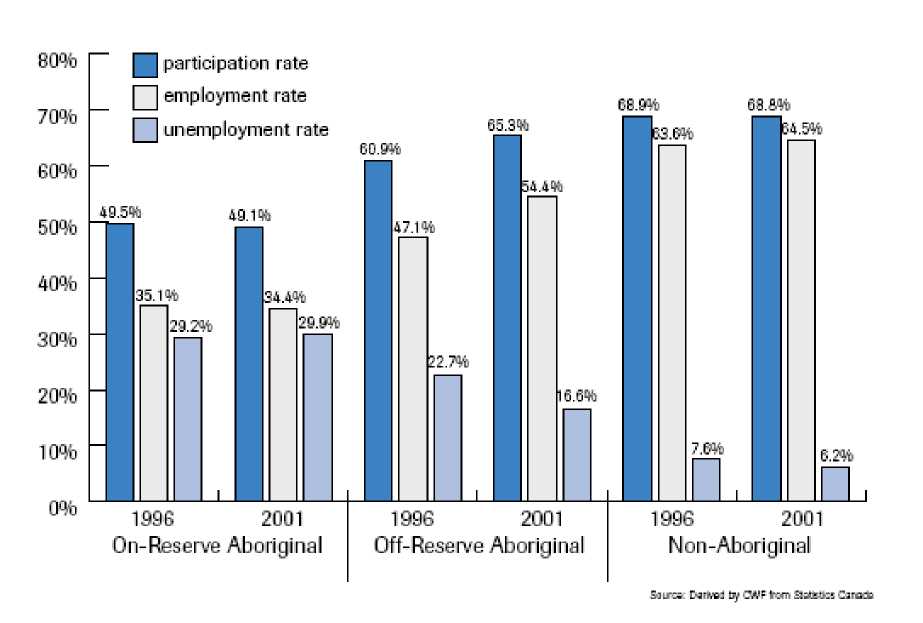50
percentage points. Individuals with bachelor‘s degrees, college certificates, high school
certificates, and individuals who went to university without graduating all enjoyed noteworthy
improvements over the 1996-2001 period.
iii. On-Reserve/Off-reserve Aboriginal Labour Market Participation
The area of residence also affects labour market outcomes. On-reserve Aboriginals have
consistently lower labour participation rates, except at the university degree level where
outcomes are similar (Brunnen (2003a)). On average, the participation rate of on-reserve
Aboriginal Canadians was 16.2 percentage points lower than their off-reserve counterparts in
2001, 49.1 per cent compared to 65.3 per cent for off-reserve Aboriginal Canadians (Chart 13).
The lower participation rates on reserves can be partially explained by the lower educational
attainment of on-reserve Aboriginal Canadians noted in the previous section, lower employment
opportunities and the fact that on-reserve residents are more likely to participate in more
traditional activities such as hunting and gathering and as such may not be participating in the
formal labour force.
Chart 13: Labour Force Outcomes of Aboriginal Canadians On- and Off-Reserve in the
Western Provinces 1996, 2001

More intriguing information
1. The Trade Effects of MERCOSUR and The Andean Community on U.S. Cotton Exports to CBI countries2. Short- and long-term experience in pulmonary vein segmental ostial ablation for paroxysmal atrial fibrillation*
3. HOW WILL PRODUCTION, MARKETING, AND CONSUMPTION BE COORDINATED? FROM A FARM ORGANIZATION VIEWPOINT
4. Neighborhood Effects, Public Housing and Unemployment in France
5. The name is absent
6. The name is absent
7. Land Police in Mozambique: Future Perspectives
8. Equity Markets and Economic Development: What Do We Know
9. Pupils’ attitudes towards art teaching in primary school: an evaluation tool
10. Bridging Micro- and Macro-Analyses of the EU Sugar Program: Methods and Insights